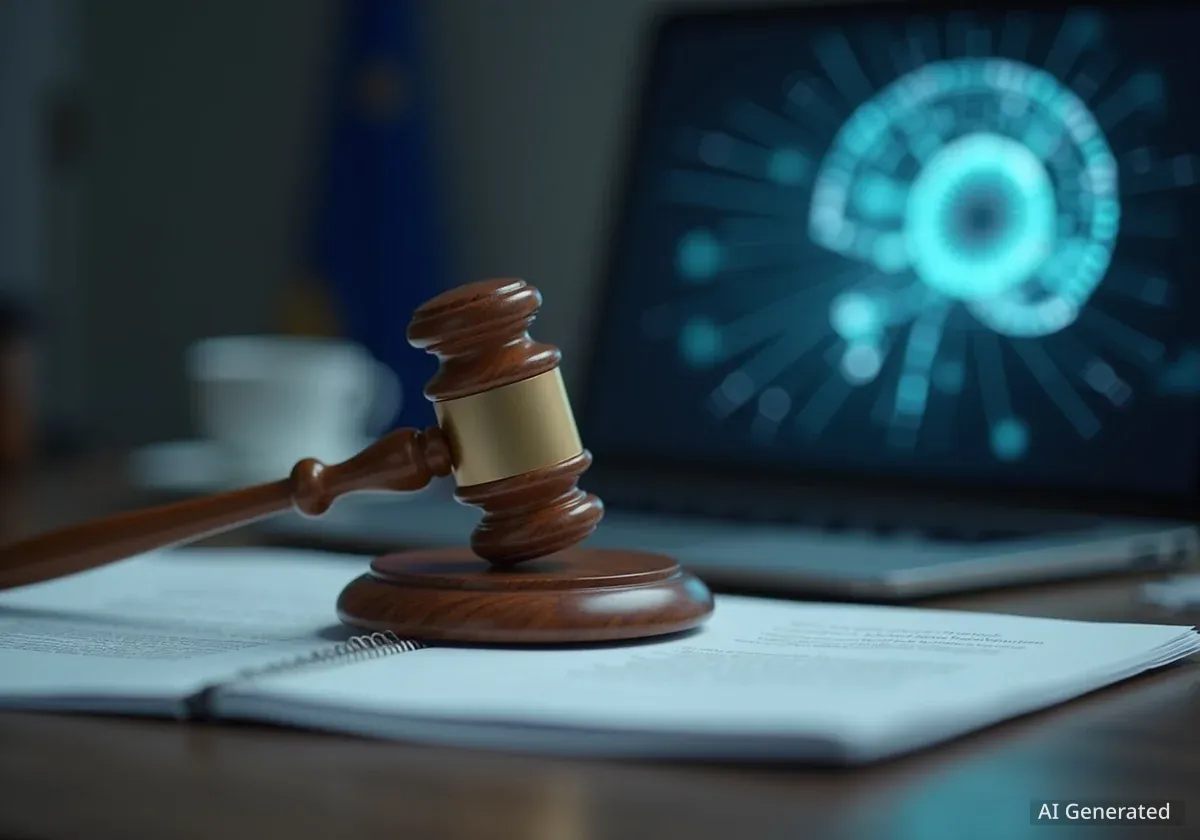A Florida judge has publicly detailed a violent, AI-generated death threat she received, highlighting a growing trend of digital harassment targeting women in public service. The threat, a three-minute animated video, depicted a graphic attack against her and was posted on TikTok in September 2023.
Key Takeaways
- Judge Jennifer Johnson of Dixie County, Florida, received a detailed, AI-generated death threat in the style of a video game.
- The video included personal information such as her family details, home address, and workplace.
- The incident is part of a wider pattern of AI-driven harassment, including deepfakes and doxxing, aimed at women in public office.
- State judges often lack the federal security protections available to their counterparts, creating significant safety gaps.
- Following a delayed law enforcement response, the creator of the video was convicted and sentenced to 15 years in prison.
A Graphic Digital Threat Made Public
For the first time, Judge Jennifer Johnson has spoken out about a deeply disturbing experience that has affected her for two years. At a recent forum on judicial security, she shared details of a sophisticated, AI-generated video that threatened her life.
The video, which appeared on TikTok, was designed to look like the popular video game Grand Theft Auto. In a 40-second clip shown at the forum, an animated character attacks a woman, first with a hatchet and then with a gun. A voiceover states, “Judge Johnson, let’s bury the hatchet.”
“That video is still difficult to watch, especially thinking about my children that saw that on social media,” Johnson stated during the event, which was hosted by the advocacy group Speak Up for Justice.
She explained that the full three-minute video was far more personal and menacing. “He named me. He talked about my divorce, my remarriage, my name change, my children, where I live and where I work,” Johnson added. “And so it was a very scary time for me and my family.”
The Broader Trend of AI-Weaponized Harassment
Judge Johnson's case is not an isolated incident. It represents a concerning rise in the use of artificial intelligence to create and disseminate threats, particularly against women in positions of authority. This includes the creation of deepfakes—manipulated images, videos, or audio—that are increasingly realistic.
AI and Threats Against Congresswomen
A 2024 study by The American Sunlight Project (ASP) uncovered tens of thousands of sexually explicit, AI-generated images and videos depicting 26 different female senators and members of Congress. This highlights the scale of AI's use in targeted harassment.
AI tools can also be used to gather personal information, such as phone numbers and home addresses, from online sources. This data is then used in harassment campaigns like doxxing, where private information is published online with malicious intent.
Other judges at the forum shared similar experiences. Judge Carroll Kelly of Miami described a cyberattack that flooded her inbox with tens of thousands of emails in a few hours, effectively shutting down her court's operations. “My work was totally impacted,” she said. Her personal financial accounts were also compromised.
Colorado Supreme Court Chief Justice Monica Márquez reported that justices on her court have been victims of doxxing and swatting—a dangerous practice where false emergency calls are made to send armed police to someone's home. Márquez, who is openly gay, also received personal calls and texts with homophobic content and references to sexual violence.
Gaps in Judicial Security and Legal Frameworks
The incident exposed significant vulnerabilities in the security provided to state-level judges. While federal judges are protected by the U.S. Marshals Service and laws like the Daniel Anderl Judicial Security and Privacy Act, state judges must rely on local law enforcement and a patchwork of state laws.
When Judge Johnson reported the threat to the FBI and local and state police, she recalled the initial response was dismissive. “The response that I got was ‘Judge, it’s usually the ones that bark, don’t bite,’” she said. Frustrated, she sought help from friends connected to retired U.S. Marshals to create a personal safety plan.
State vs. Federal Protection
- Federal Judges: Protected by the U.S. Marshals Service, which provides courthouse security, residential safety measures, and personal surveillance. The Daniel Anderl Act also restricts the public posting of their personal information.
- State Judges: Lack access to U.S. Marshals. Security responses and privacy protections are determined by state and local laws, which vary widely. Many rural jurisdictions lack the resources to handle complex digital threats.
It took five months before law enforcement began a serious investigation. Ultimately, the man who created the video was tried, convicted in November 2024, and received the maximum sentence of 15 years in prison.
Legislative Efforts to Address New Threats
Lawmakers are beginning to address the challenges posed by AI-generated content. According to the Brennan Center for Justice, nearly 100 AI-related bills were passed by states in 2024, with more than 1,000 introduced during 2025 legislative sessions.
These laws address various issues, from nonconsensual sexual content to material involving children. However, the legal handling of AI-generated violent threats remains inconsistent, as it can be difficult to establish criminal intent and legal liability.
At the federal level, the “Take It Down Act,” signed into law in May 2025, imposes criminal penalties for publishing nonconsensual intimate images, whether real or computer-generated. It is not yet clear how this law applies to non-sexual but violent AI content like the video targeting Judge Johnson.
A bipartisan bill, the “Countering Threats and Attacks on Our Judges Act,” has been introduced in the Senate. If passed, it would establish a resource center to provide security training and technical assistance to state and local judges across the country.
For judges like Johnson, the need for better protection is urgent. The constant need for vigilance has taken a personal toll. “To have to pay attention and not sit near a door in a restaurant or move to the other side of the church... and to always be looking over your shoulder and concerned, it is just not a way to live,” she said.





